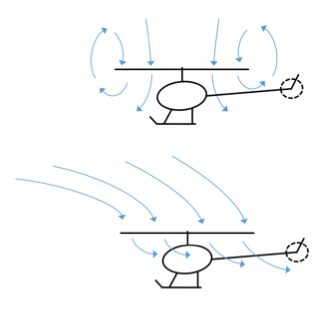Kilrah
Well-Known Member
Yet it doesIt makes no sense that hovering takes more energie then traveling from one place to another.
Yet it doesIt makes no sense that hovering takes more energie then traveling from one place to another.
It makes no sense that hovering takes more energie then traveling from one place to another.
Do you have proof off that statement, hoovering takes more energy?
Anny link?.
I found a test on YouTube, that proofs normal flying around, costs more energy than hoovering.
It is common sense.
The energy holding something at place, cost less energie then moving it around.
I can stand still a hole day long.
But running arround, less then 10 minutes.
And so I did. I read that the fonomane will starts around 16 to 24 knots, so you don't need to go in sportsmode. N will do.
A few day's ago i did the hoover test, it last 28 minutes.
As soon as the wind "will lay down" as we say in Holland, I do the test over flying around.
The best way to proof the theorie, is to compair it to the practice.


Your intuition is correct but only when the craft is flying at relatively high speed. This is from the user manual of Air 2 :And so I did. I read that the fonomane will starts around 16 to 24 knots, so you don't need to go in sportsmode. N will do.
A few day's ago i did the hoover test, it last 28 minutes.
As soon as the wind "will lay down" as we say in Holland, I do the test over flying around.
The best way to proof the theorie, is to compair it to the practice.

Cold weather affects the battery capacity!Brand new, Mini2, got battery bank (so 3 batteries in total)... I took it out today for the first time...
Did a few (less than 15' of flying and I had to bring it back for low battery.... then...
Did about 2.5 minutes of video (and maybe another 2 minutes of flying at the most) freshly charged battery at 100%) and the app was already indicating battery down to 63%. it doesn't seem this will last more than 12' ? (if that)... I'm not doing a whole bunch of crazy things, up and down and all that... just getting used to it.. a couple of quick shots but I can see the battery counting down like no other when flying ... is this normal ?? Tried other batteries ....pretty much the same...
I understand the fact this is a small drone and all that but from what I see there is NO way I'll get even close to the advertised flight time. Maybe 15' max and good luck getting it back home !!!
I'll need an 18 wheeler full of batteries right next to me to get any enjoyment out of this... So disappointing... I find myself paying more attention at the battery than the drone itself....
That only helps to an extent. It's possible for the cold to get cold enough that the battery still can't give a proper amount of voltage despite the warning up as a result of discharge. Hence why there is an operational range of 32F to 104F, some of the higher end drones have their own dedicated battery warmers to handle colder.When flying, the battery's are getting warm.
I promest to do a fly time test, I may do a battery temperature test as well.
Hoovering for 28 minutes at 37°F maked the battery's get handwarm.
The hoover test, as mentioned in the old TV show Emergency! is to determine if someone is lying about being paralyzed in the leg.Hoovering in place in windy conditions is (almost) the same as flying.
Thats not how Hoover Tests work.
Is that importend where the warmth was comming from? Is the heat coming from the main board off the RC, you think? Can't be from the motors...
Anyway, the accu was so warm, it won't fast charge.
The guy lives in the Netherlands, can you speak Dutch. Be kind.The hoover test, as mentioned in the old TV show Emergency! is to determine if someone is lying about being paralyzed in the leg.
The hover test is to examine how a copter behaves floating stationary in air.
Sorry but seeing the misspelling constantly was getting annoying.
It was getting late, Of course I ment "the drone" (UAS )The heat will largely come from the onboard electronics and battery. In very cold weather the aircraft electronics could be creating more heat than the battery. The motors are not creating any useable heat other than they are consuming considerable power, which will generate heat on the ESC’s, the main electronics boards and battery.
Nothing to do with the ‘RC’, which is the abbreviation we use for Remote Controller.
We use essential cookies to make this site work, and optional cookies to enhance your experience.

